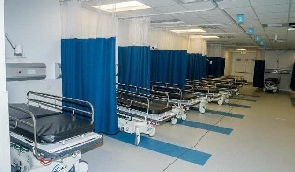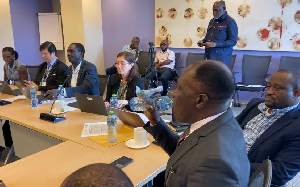The Ghana Statistical Service (GSS) has raised concerns regarding the government's Agenda 111 initiative, citing issues with the locations and accessibility of healthcare facilities nationwide.
According to findings from the 2022 Demographic and Health Survey (DHS) Report, covering 618 clusters across 261 administrative districts, a substantial 40% of Ghanaian women aged 15 to 49 face travel times exceeding 30 minutes to 2 hours for healthcare access.
Government Statistician Prof. Kobina Annim emphasised the urgency of addressing this matter to avert potential challenges in the future.
During the presentation of the report on Thursday, January 18, he stated, “We identify that about 2/5, that is in excess of 40%, of women aged 15 to 49 years were traveling in excess of 30 minutes to access the nearest health facility."
“This puts into context the government’s intervention of Agenda 111, considering its location and the extent to which it may impact the fact that 40% of people are traveling in excess of 30 minutes to access the nearest health facility," he added.
Highlighting disparities across the 16 administrative regions, Prof. Kobina Annim expressed concern about those traveling more than two hours to access healthcare. The Oti region stood out, with over 10% of women aged 15 to 49 years facing travel times exceeding two hours to reach the nearest facility.
Dr. Patrick Kuma Aboagye, Director-General of the Ghana Health Service, acknowledged the regional disparities and committed to addressing them.
He stated, “While some targets have been met nationally, it is a concern that several regions fall short, showing substantial regional disparities for almost all indicators including skill delivery and percentage of children without vaccinations."
Dr. Aboagye emphasised the need for strong leadership, clear guidance, and coordinated efforts among multiple partners in the health sector.
He pledged to deliver high-quality services at both facility and community levels but emphasised the necessity of support from the media and the entire population to achieve these goals.
Health News of Friday, 19 January 2024
Source: classfmonline.com













